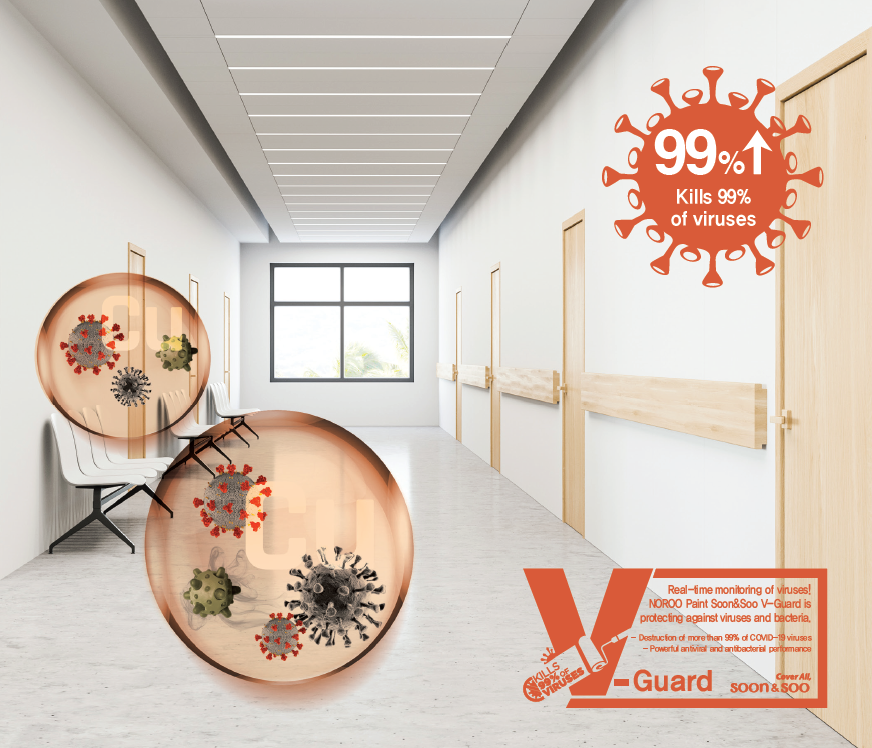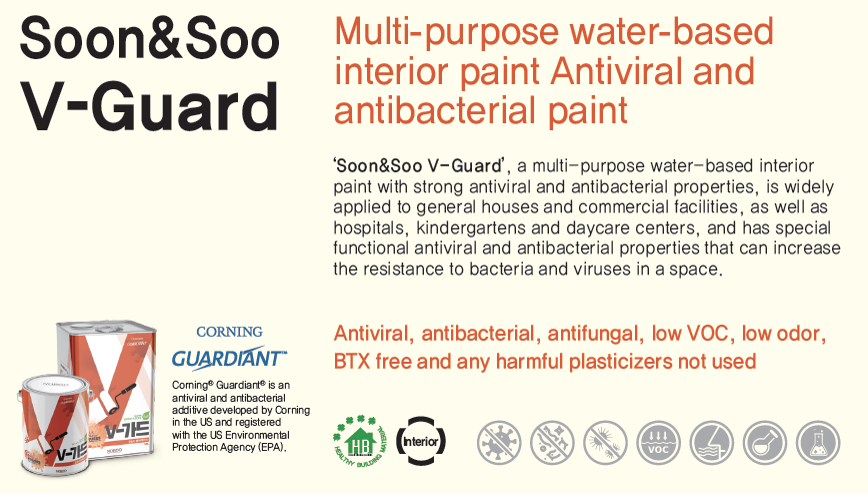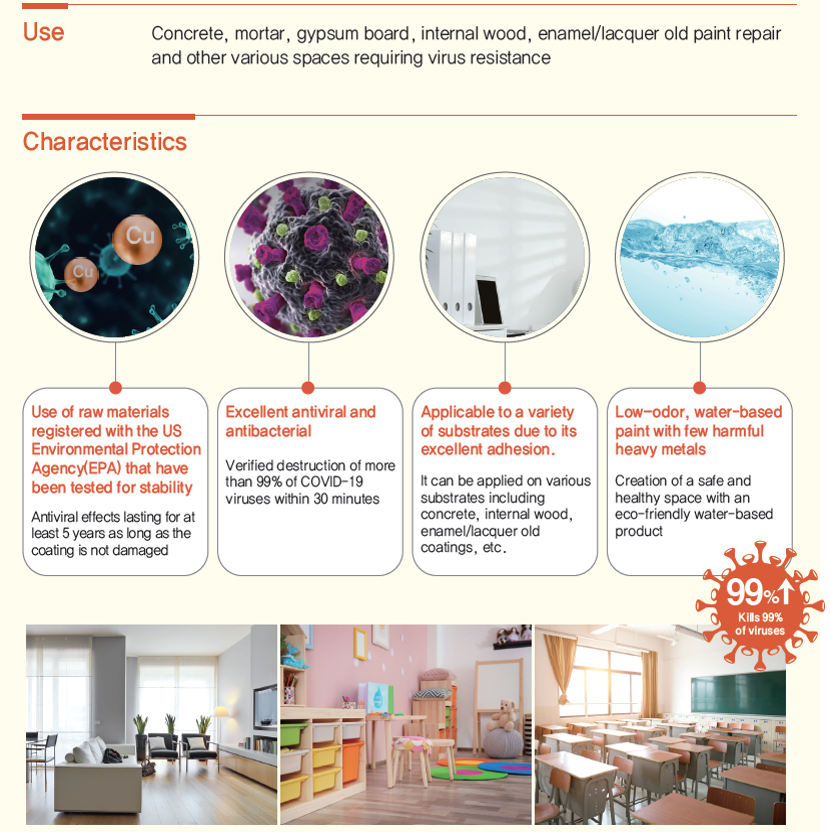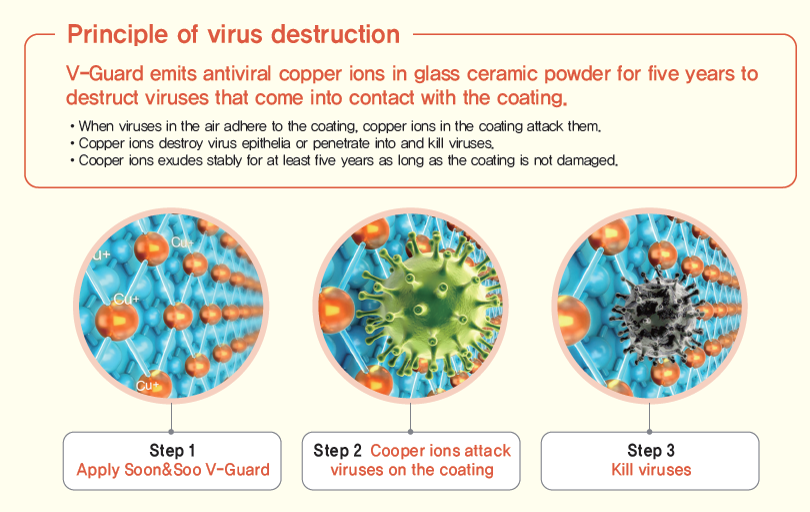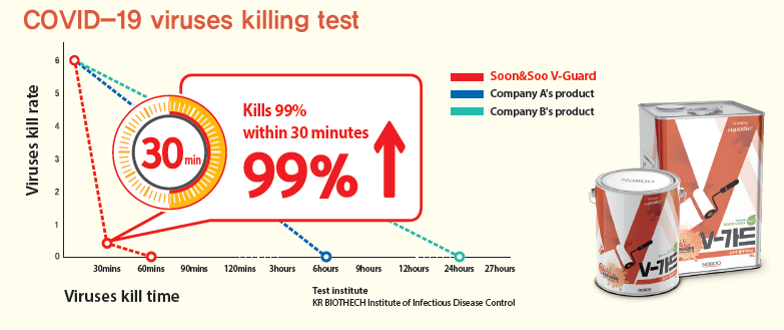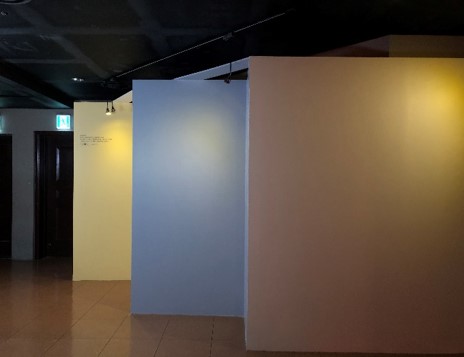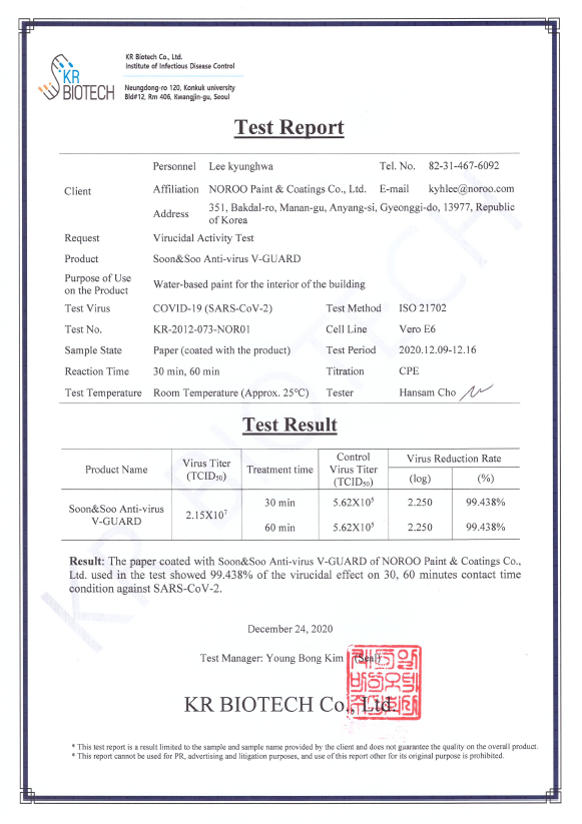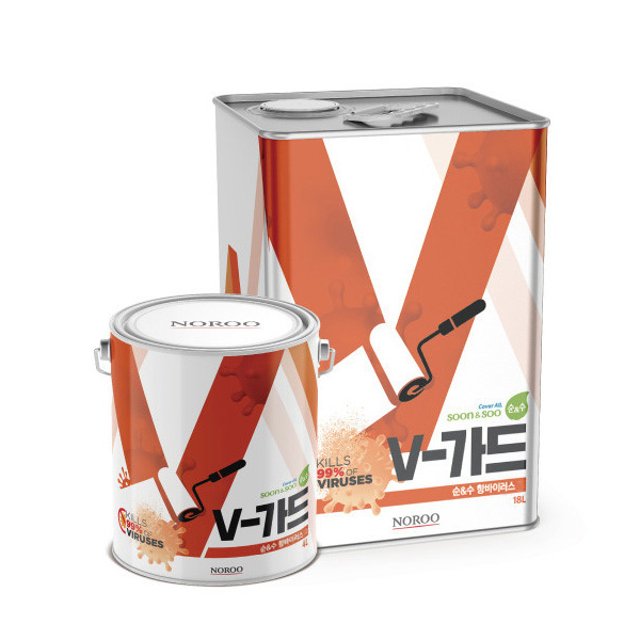Architecture Paint
Soon & Soo V-Guard
- usage
- Alkaline material such as concrete, cement mortar, plasterboard, etc.
Interior wood, enamel/lacquer old coating repairs
Diverse subsrates requiring Anit-Covid 19 virus
This paint is a special functional paint that has been registered with the US Environmental Protection Agency (EPA) and has been tested for safety by applying a special inorganic antiviral material. It has been proven to kill COVID-19 viruses and Influenza A, as well as antibacterial and antifungal performance.
It is made by using special emulsion resins and pigments with excellent adhesion, so it can be painted on a variety of materials, including not only concrete, but also oil-based enamels and old coatings of lacquer.
In addition, it is egg-shell gloss, has excellent stain resistance, and has almost no odor during painting and drying.
specification
- Paint type
- Acrylic emulsion water-based interior / Top coat
- Drying time
-
Drying time Category 5℃ 20℃ 30℃ Time required for re-coating (min.) 4 hours 3 hours 2 hours - Thinner
- Tap water(dilution rate: up to 10%, volume ratio)
- Coating Method
- Brush, roller, spray coating
- Specific gravity
- Approx. 1.31(based on light color)
- Solid volume ratio
- Approx. 39%(based on light color)
- Theoretical Coverage
- 5~7㎡/ℓ/2times
- Thickness of dried film
- 60㎛ (2coats recommended)
- Re-coating interval
- 20℃, sufficient ventilation for a minimum of 3 hours
- Color
- White, other colors
- Gloss
- Semi-gloss ((Egg-shell gloss)
- Storage and preservation
- 12 months (Dry, cool, and dark place with good ventilation, room temperature 5℃~30℃, humidity less than 80%)
PRODUCT PROPERTIES (PHYSICAL PROPERTY DATA)
- Excellent antiviral and antibacterial
- Antiviral effects lasting for at least 5 years as long as the coating is not damaged
- Various purposes
- Multi-purpose water-based paint that can be attached to various basis materials with superior aniti-contamination properties
- Color
- The application of special inorganic antiviral substance, the white color represents a light off-white
- Eco-friendly properties
- LOW VOC, Formaldehyde, Nonylphenol, no harmful heavy metals
how to use
- Surface treatment
- 1. If there are dust, oil, scribbles in crayons, colored pencils, etc. and dirty finger marks, they should be removed with a neutral detergent diluent the surface should be wiped.
2. Areas infested with mold should be cleaned with a damp cloth after removing the mold using bleach or a mold cleaner. The paint should be applied after completely drying the surface.
3. If any of the old film remains, apply the paint after sanding the old film with sanding paper and clean the area for enhancement of adhesion.
4. When applied to concrete and general water-based old films, the surface treatment method is the same as the one for general water-based.
5. After the substrate treatment, dilute the gesso with water up to 100%, and apply once at a dry film thickness of 30㎛ with a roller, brush or spray. - Coating method
- ① After at least 3 hours at 20℃ following undercoating, apply this paint twice to get a dry film thickness of 50㎛ with a brush, roller or spray.
② At this time, apply by diluting with water up to 10%.
③ After 2 coats, the re-coating interval is at least 3 hours after the first top coating at 20℃.
